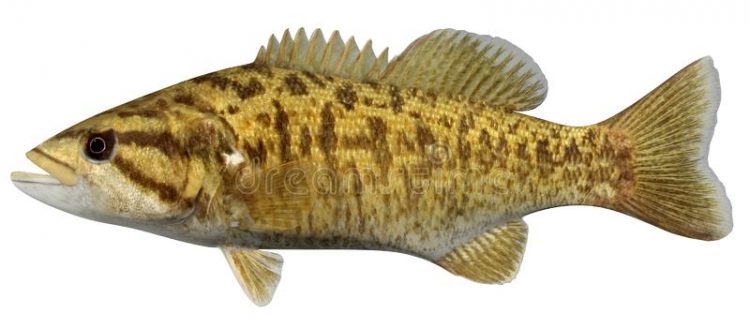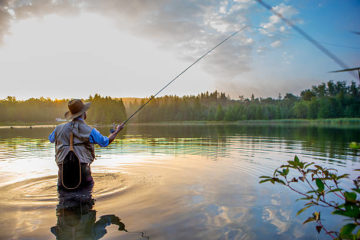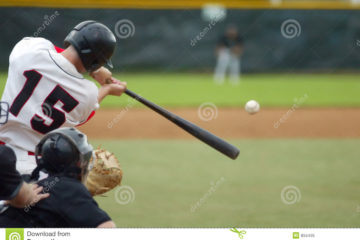Where Different Types of Bass Live and Spawn

By
While there are numerous species of bass found across North America, three main types are pursued by freshwater anglers – Largemouth Bass, Smallmouth Bass, and Spotted Bass. Each thrives in different habitat conditions and will react to winter conditions in their unique ways based on their biology and preferences.
Largemouth Bass
Largemouth Bass are the most widely distributed and popular gamefish in the United States. These opportunistic predators prefer warmer, shallow waters and thrive in lakes, ponds, reservoirs and slower-moving rivers. They especially favour areas with an abundance of vegetation, fallen trees, stumps, docks and another sunken wood cover. Their spawning season peaks from late spring through early summer when water temperatures reach the mid-60s.
Smallmouth Bass
Smallmouth bass are most abundant in the cooler waters of eastern North America’s lakes and rivers. They gravitate towards clearer water with moderate currents, rocky or sandy bottom structures, and submerged vegetation. Smallmouth thrive in the flowing waters of rivers and streams but also inhabit the shallow to moderately deep rocky zones of natural and man-made lakes. Spawning occurs in the spring when water temperatures near 60 degrees.
Spotted Bass
Sometimes referred to as Kentucky Bass, Spotted Bass are primarily found throughout the central United States and southeastern states. While adaptable to a variety of ecosystems, they favour clearer water with some current. Reservoirs, tailwaters, medium-sized streams and rivers provide ideal spotted bass habitat. Their spawning period is a few weeks earlier than largemouth and typically takes place in April or May.
Why Bass Move and Change Behavior in Winter
Bass are classified as cold-blooded animals, meaning they cannot internally regulate their body temperature. This forces them to migrate and adapt to their external surroundings in order to survive. When the water temperature drops below 50 degrees Fahrenheit, bass metabolism slows down dramatically and feeding and movement decrease significantly.
While bass can withstand short periods in freezing water, prolonged exposure to temperatures under 37 degrees can be fatal. When their cold-blooded bodies sense Winter coming on, bass instinctively begin migrating towards deeper areas that offer warmer water and protection from the elements.
Some key factors that influence bass location and behaviour in Winter include:
Warmer Water: Because bass is ectothermic and rely on external heat sources, they will seek out areas where the water temperature is slightly warmer, typically around 40 to 45 degrees F, but it can be life-saving for bass in Winter.
Food Availability – Even though their metabolism decreases in Winter, the bass still need to eat to sustain themselves. Locating areas where vulnerable prey like shad and perch are concentrated gives bass access to nutrition.
Cover – Underwater structure offers protection from currents and predators as well as ambush points to surprise prey. Vegetation, stumps, docks, rocks and transitions between depths provide refuge for inactive bass.
Oxygen Levels – Bass requires at least 5-6 parts per million of dissolved oxygen in the water. If the area they reside in drops below this threshold, bass will search for more oxygenated areas.
Salinity & Clarity – Dramatic shifts in salinity and water clarity driven by run-off events or discharge can also influence where bass spend their Winter.
Where Winter Bass Go
When the conditions demand it, largemouth, smallmouth, and spotted bass all make seasonal movements to areas where they can find warmer, more oxygenated water and sufficient food supplies. Some of the key types of areas bass migrate to in Winter include:
Deep Spots in Lakes & Ponds
Lakes and ponds exhibit thermal stratification during Winter, meaning the surface area becomes colder while deeper zones maintain slightly warmer water near the bottom. Bass will gravitate towards these deeper haunts, positioning just off the bottom near any available structure or cover. Deep underwater humps, ledges, and holes with access to springs or fresh groundwater flow allow the bass to wait out the Winter in relative comfort.
In northern fisheries that experience heavy ice coverage, bass will pull up in depths usually between 30 to 50 feet deep. Bass in more temperate southern winter climates only need to move to depths ranging from 15 to 25 feet. Using a quality fish finder makes locating deep bass concentrations much easier.
Channel Swims & Creek Mouths of Rivers
Rivers creeks generally maintain a steadier, more consistent temperature year-round thanks to their continuous flow. Bass follow this, moving water towards downstream areas where smaller feeder creeks join. The deeper holes and softer flows in these confluences attract and provide refuge for predator and prey.
Bass also relates to bends in the river channel, outside edges where the water runs faster, deeper rises, holes and humps on the bottom, as well as any wood, rock or vegetation cover. These modest depth changes become bass highways leading to their wintering habitat.
Discharge Areas Below Dams & Power Plants
Man-made obstructions like dams on rivers and power plants along lake shores force water through their operations, and the flows downstream from these structures attract winter bass. The oxygen levels are higher, and the released water is typically a bit warmer, having been pulled from deeper depths. Find below-dam pools, creek channels in discharge coves, and marinas or canals near power plant outflow to locate congregations of sluggish coldwater Fish current breaks, eddies and any cover near these areas.
Structures With Vegetation, Wood, Rocks
Any sort of physical cover or structure along a drop, flat, point, island, or channel provides a micro-habitat for bass. Submerged vegetation, wood like treetops and logs, and rocks like riprap and boulders give bass places to tuck in where they can easily ambush prey and avoid predators. Target the edges of these cover forms where transitions create zones of opportunity.
How to Find Winter Bass
Locating where inactive coldwater bass are hunkered down is one of the keys to winter fishing success. Savvy anglers use a variety of tactics and technology to pinpoint where to focus their efforts:
Fish Finder Sonar – Using quality 2D sonar and advanced live-scanning fish finder systems allows anglers to map bottom structures and identify where bass are holding near that structure. This is extremely valuable in finding congregations of fish in deep water areas of lakes.
Underwater Cameras – Lowering underwater cameras gives an eyewitness view of where bass are positioned as well as how they are reacting to baits and lures. Real-time visual feedback allows an angler to dial in presentations.
Slow Trolling – Systematically covering an area by slowly trolling suspending stick baits, diving crankbaits, tube jigs, and other lures is an effective way to locate groups of lethargic winter bass. Watching your electronics while trolling can pinpoint where fish are holding.
Target Warmer Areas – Drainages near power plants, industrial discharges, tributary creeks and areas fed by underground springs often hold warmer water. Search out radiating pockets and drains surrounding these winter warm zones.
Winter Fishing Tips & Tactics
Adjusting approaches and tactics is a must for fooling coldwater bass. Here are some key strategies for tempting less active bass when the temperatures take a plunge:
Downsize Your Offerings – Big baits are not on the menu for sluggish, unwilling bass. Scale back to more compact profile lures in the 3-4 inch range on a slow troll or 1/16 to 1/8 ounce finesse jigs fished vertically near cover.
Slow Your Movements – Lethargic fish in cold water are easily spooked by fast-moving baits. Keep retrieval speeds low and steady, and make very light jig hops. Be methodical.
Warm Up With Live Bait – The universal cold water bait is a lively minnow hooked through the lip on a tiny jighead or small hook. Fish it slowly under a float on suspended bass.
Stealth Is Key – Heavy footsteps on the boat deck, loud talking, and banging around in your tackle box can make bass skittish. Tone down the noise.
Ice Fishing Over Bass – Once a lake freezes over, bass becomes relatively dormant under the ice sheet. Punch some holes above them and entice them with jigs and small spoons.
Pick Warm Days – Bass hold tighter to cover when coldest, but even a slight warm-up of a few degrees gets them more active. Be aware of warming trends.
When to Target Cold Water Bass
Timing your winter bass outings based on warming trends, weather shifts, and diurnal patterns is wise. Key times to intercept active winter bass include:
Early Morning – At first light, bass are naturally more apt to hunt and roam after a long evening of inactivity. Fish the first two hours of daylight.
Warming Trends – Any warming trend, even if only a couple of degrees, will switch sluggish bass into feeding mode.
Post-Cold Front – Some huge winter feeds happen 1-2 days after a strong cold front passes and high pressure builds in.
Slight Warm-Ups – When the mid-day high hits the magical 50-degree mark, bass metabolism increases, and they get more catchable.
Any Temperature Rise – During Winter, a one or two-degree rise in water temperature over a few days is significant enough to spur bass activity.
Winter Bass Behavior and Patterns
Below, we’ll break down some more details on winter bass behavioural patterns and discuss how they respond to their surroundings when the cold sets in:
Lethargy & Limited Activity
Once water temperatures drop into the 40s, most bass seek out some form of structure, transition or cover and settle in for the Winter. Movement is kept at a minimum to conserve energy. They may occupy only a few square yards for the entire season.
While lethargic, they still need to eat any opportunities that swim by their lair. Feeding is opportunistic, and bass seems to prefer an easy meal delivered right to their strike zone rather than pursue prey.
Relating to Structure and Cover
Bass depends on elements like underwater points, creek channel swings, standing timber, or brush piles to provide a strike zone where they can pinpoint prey and launch an attack using a minimum of energy.
Rocks, weeds, dock pilings, laydowns, bluffs and timber create edges and transitions for coldwater bass to wait in ambush. Targeting the sweet spots around these areas is paramount.
Suspended Bass
Not all winter bass settle on the bottom. Some suspend themselves under deep docks, off-channel ledges, and underneath large bait schools. Keeping lures and live baits in the strike zone, both near the bottom and suspended, requires adjusting the sink rate and depth.
Preferred Baits Change
Aggressive reaction baits like lipless crankbaits, square bills, spinnerbaits and hollow-bodied frogs don’t appeal to inactive bass. Finesse tactics like spoons, hair jigs, small paddle tail swimbaits, and compact profile diving jerk bait become go-to baits.
Colours & Visibility Adaptations
Winter bass key in natural baitfish forage colours like white, silver and grey but also feed on craws. Mix up light and dark patterns based on water clarity. Silhouettes and profiles become more important than colour with diminished light.
Specific Winter Habitats
The biggest key is locating where baitfish set up camp for the Winter, as bass will settle close by. So scan areas near creek channels, powerlines, bridges, docks, dam tailwaters, springs, timber and rocks in the lower ends of lake pockets. Find the food, find the fish.
When the cold winds blow, the bass don’t have to go. Find warmer waters and slow down the show. Emma Janner
Bass Fishing Guide and Educator
sooperarticles.com







No Comment